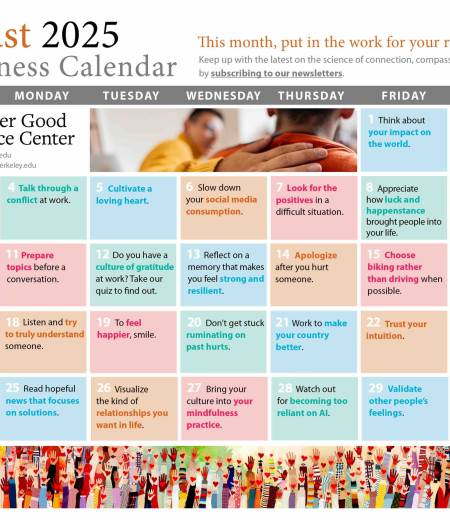For decades, researchers have developed and tested adolescent depression prevention programs that show strong results.
But a new study reveals a major flaw in the evidence base: These programs, largely tested on white youth, may not work equally well for everyone.
The peer-reviewed study examined the effects of a culturally adapted school-based depression prevention program called LARS&LISA. The results were stark: While the program led to a measurable decrease in depressive symptoms for white students, it had no significant effect for Black students, despite serving the same school population and incorporating student-informed changes.
X

The study’s coauthors, Hayley Seely and Patrick Pössel, both researchers from the University of Louisville, say the findings not only reflect a gap in the intervention—they expose a deeper issue: The entire theoretical foundation of youth depression prevention may be built on limited, racially homogenous data.
“It’s my program,” said Pössel, who developed LARS&LISA more than 25 years ago. “So you feel really personally hurt when you go, ‘Oh my God, that’s not working. What did I do for 25 years?’ But after some time, I started thinking, maybe it’s not the program. Maybe it’s the theories we’ve built the program on.”
A prevention program under scrutiny
The study took place at a Title I high school in Louisville, Kentucky, where most students come from low-income backgrounds. The school’s ninth-grade students were randomized into two groups: One received the LARS&LISA prevention program during their physical education classes; the other did not. Of the 425 students included in the final analysis, 57% identified as Black and 43% as white.
Originally developed in Germany, LARS&LISA is grounded in cognitive behavioral therapy (CBT) and self-management therapy, aiming to help teens develop realistic thinking, communication skills, and healthy social relationships. Previous research had found it effective across a range of outcomes, including reducing symptoms of depression and aggression.
But when Seely and Pössel looked at the data by race, the results revealed that white students improved and Black students did not. The program significantly reduced depressive symptoms in white teens both immediately and at a four-month follow-up. In contrast, there was no statistical difference between Black students who received the intervention and those who did not.
The findings echoed earlier research from a 2002 primary study and long-term findings in 2007 by psychologist and researcher Esteban V. Cardemil, who found that his culturally adapted CBT program was effective for Latino youth but failed to produce similar benefits for Black youth.
Theories built for one group
After the initial surprise and disappointment, the researchers began asking new questions—not just about the program, but about the entire framework behind depression prevention in youth.
“We base our interventions on psychological theories of depression,” Pössel explained. “But who are those theories tested on? White, middle-class, college students—mostly women. So when we try to apply those models to other groups, it’s no surprise they don’t hold up.”
To dig deeper, Seely and Pössel conducted a separate study looking at how well existing depression models predict depressive symptoms across races. They found that widely used cognitive theories—such as hopelessness theory, also known as learned helplessness—explained about 70% of the variance in depressive symptoms among white teens, but only 50% among Black teens.
“The model works—but not as well,” said Pössel. “That quarter difference is significant. It suggests our understanding of how depression develops is incomplete.”
Adaptation isn’t always enough
Before launching the program at the high school, the research team conducted focus groups with both Black and white students to adapt LARS&LISA for a more diverse audience. These changes included updating examples, storylines, and role-play scenarios to reflect different cultural experiences.
One powerful moment came when Black boys pushed back on a core concept: the value of being “assertive.”
“They told us, ‘If I’m assertive in class, I get kicked out. If I’m assertive at home, I get in trouble. If I’m assertive with the police, I might get shot,’” said Pössel. “That completely changed how we taught assertiveness.”
Instead of promoting assertiveness as the universal ideal, the program began emphasizing goal-based behavior, helping students assess context and decide how best to achieve their aims safely.
“We thought we had made meaningful changes,” Pössel said. “But clearly, even that wasn’t enough to close the gap.”
Seely added that programs also need to account for structural inequities that shape Mental health risks in the first place—such as poverty, racism, and intergenerational trauma.
“There are real social structures that shape how depression manifests in different communities”
―Hayley Seely, Ph.D.
“We’re testing these interventions inside a culture,” Seely said. “There are real social structures that shape how depression manifests in different communities. Even when we intentionally adapt programs, we cannot necessarily expect the same results.”
Toward more inclusive models
Both Seely and Pössel see the study as a starting point—not an endpoint—for reimagining how prevention programs are developed and whom they are built for.
“We’re still answering the question of ‘why,’” Seely said. “What exactly is missing in this program for Black youth? And how can we involve them in answering that question?”
They emphasize the need for more community-based collaboration, representation, and bottom-up research design—not just adapting existing programs, but creating new models informed by the experiences of marginalized youth.
“If we figure out what’s missing for Black youth,” Pössel said, “we can use that knowledge to strengthen our programs across the board. In our study, our models explained 70% of depression in white youth—so there’s 30% still unexplained. Maybe what we learn from Black youth fills in that gap.”
The team is already planning follow-up studies, including efforts to replicate the work in schools with more racially diverse student bodies, as well as internationally.
They’re also trying to answer a deceptively simple question: What does effective prevention look like for Black youth?
“That’s the question,” said Seely. “And it’s going to take a lot of listening, testing, and building to find out.”
For now, both researchers say the most important takeaway is that evidence-based doesn’t mean universally effective—and that ignoring racial disparities in Mental health research comes at a real cost.
“We can’t keep pretending that what works for one group automatically works for another,” Seely said. “If we want to serve all kids, we have to start building programs that actually reflect who they are.”













